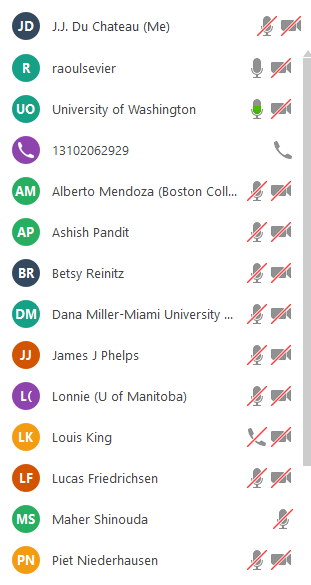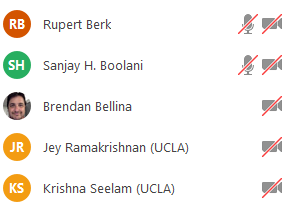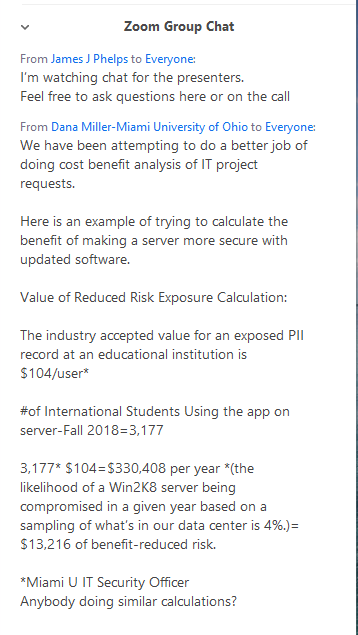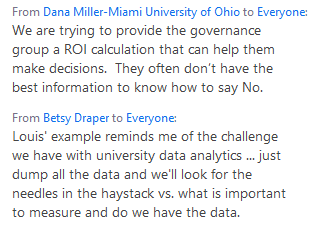Agenda
Roll Call (by timezone - East to West)
Scribe Shout-out - It's easy to scribe: How To Scribe Itana Calls Guide
Agenda Bash
Topic: Book Club: Report out: How to Measure Anything
Itana Org Updates
Working Group Updates
New2EA Working Group
API Working Group
Business Architecture Working Group
EA Maturity Model Working Group
Book Club - Reading "How to Measure Anything"
Steering Committee Update
Note: For next call read: Article: A Career in Organized Anarchy: Building Interpersonal Relationships in Higher Education, Matthew House
Attendees
Announcements - Itana News, Working Group Report out
- Next call will include the article’s author (Matthew House). If possible, please read article (8 pages) beforehand to help prepare (see link above in Agenda section)
- Have a Face-to-Face submission to EDUCAUSE (Chicago) related to those new to EA in Higher Ed
Book Club: Report out: How to Measure Anything
Measurement in this context is defined as reducing uncertainty to support in decision making.
Key Concepts
- It has been measured before – Research first as someone may have already figured out how to measure something
- You already have more data than you think – You have information that can help provide insight (Enrico Fermi decomposition - “How many piano tuners in Chicago?” example)
- You need less data than you think (Eratosthenes estimate earth’s circumference by applying basic geometry to noon shadow lengths in different cities)
- New observations are more accessible than you think (simple experiments/observations can provide useful information to reduce uncertainty)
Approach
- Define decision problem – Make sure you measure will support decision process
- Determine what you already know – Helps determine if you should measure something and how to measure it
- Compute value of obtaining additional information – Make sure the cost of measuring, the depth of measuring, and the value it provides is worth it for the decision being made
- Apply relevant measurement instruments to high value measurements
Biases
- An inherent problem with human experts
- Manage expert bias by “calibrating” the experts with author’s “Adapted Lens Model” (a fairly involved process that isn’t applicable to all measurement scenarios)
U-Washington Use Case: Document Management
- Avoid measuring just to measure – focus on real decisions and reducing uncertainty (e.g. how to allocate resources for unmet demand)
- Decomposition and small measurements can reduce a lot of uncertainty
Yale Use Case: Monitoring @ Yale
- Enterprise monitoring, alerting & performance metric project (quantitatively expressed reduction of uncertainty)
- Determine what decisions are we driving and the processes they impact
- Determine most important areas for measurement
Discussion:
- Valid decision question requires a decision maker is needed, and sometimes we (Higher Ed) don’t always have it. Culturally Higher Ed can at times to be reluctant to discuss measurement.
- Most value for architects seems to come from the first part of the book where it discusses why we measure and approaches.
Chat
Miami of Ohio is using this type of info to come up with a ROI for project proposals.
Org Updates
- New EA in Higher Ed – Second mtg with those who will lead; another month or so for format to group to get settled
- API Working Group – Upcoming meeting on the 28th
- Biz Arch Working Group – Next Fri call with Jeff Kennedy on using CAUDIT model for strategic storytelling
- Maturity Model – Waiting for next phase, encouraging people to do a practice profile
- Internet 2 EA Birds of a Feather on March 6 - https://meetings.internet2.edu/2019-global-summit/detail/10005458/




